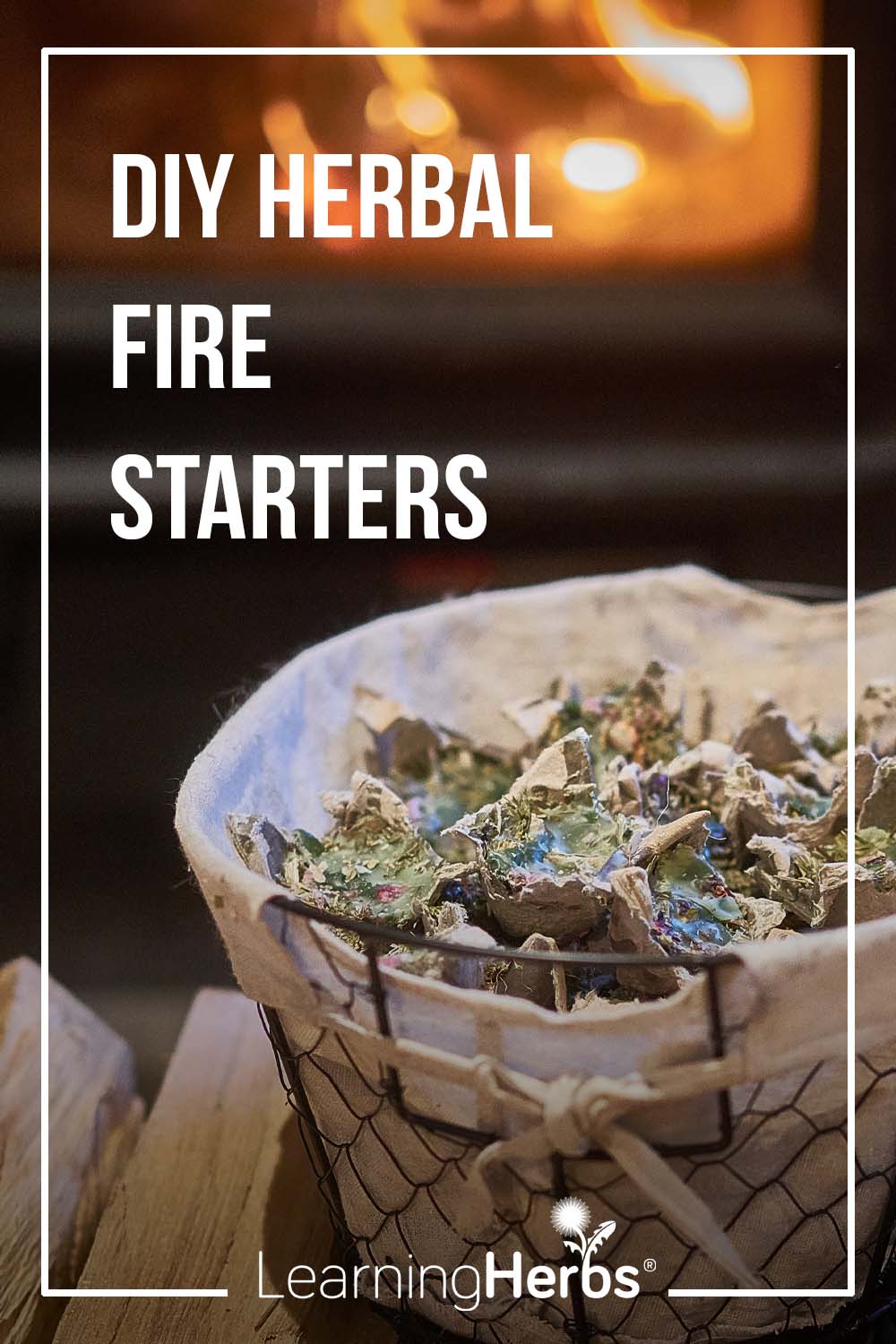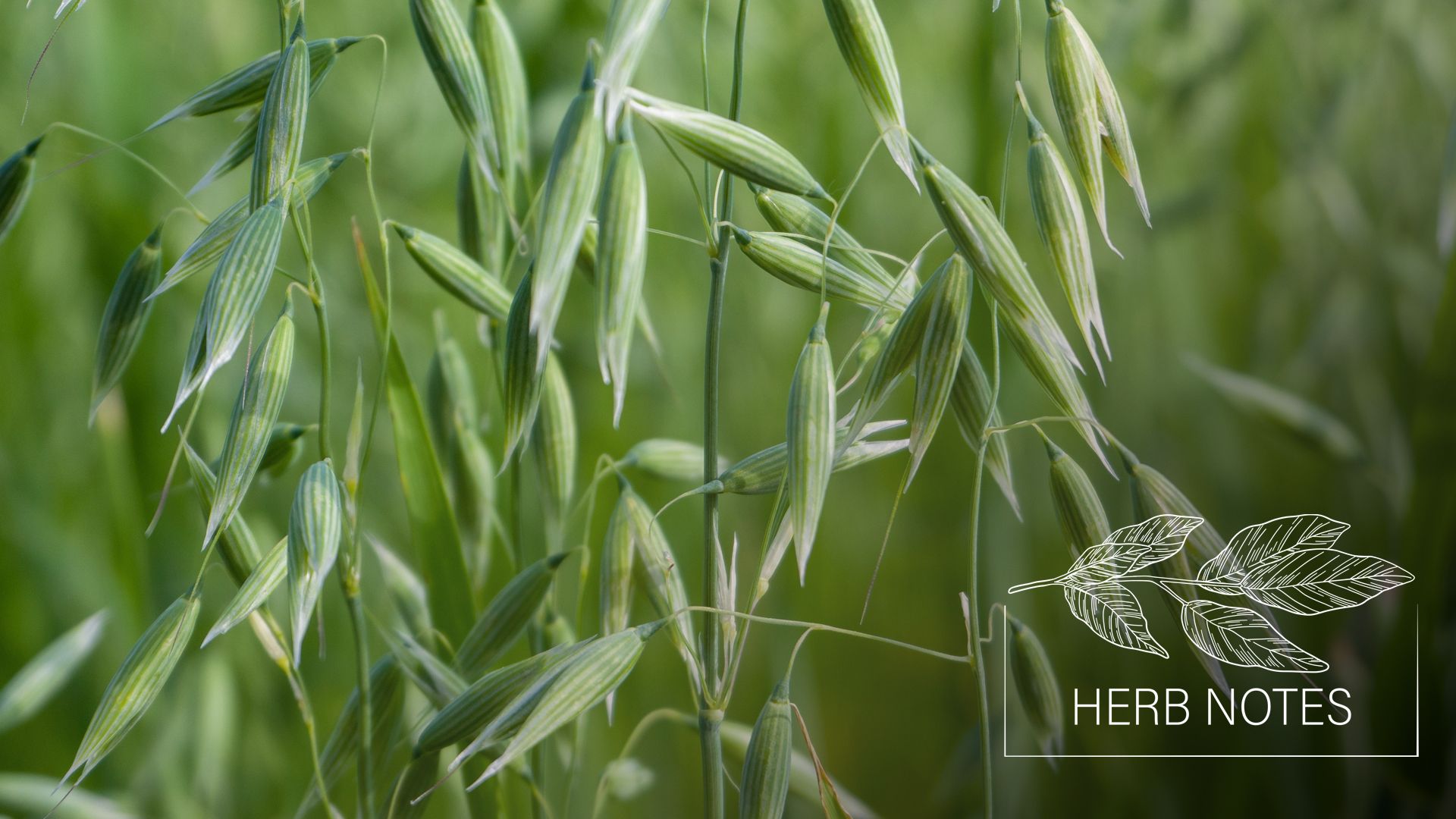
DIY Herbal Fire Starters
When the evenings turn cool and it’s time to gather around the hearth, herbal fire starters make lighting a fire both practical and special. Everything in nature is beautiful, even as it dries and fades, which is why dried herbs and flowers are perfect for pretty fire starters. Whether you’re cozying up indoors or building a campfire outside, herbal fire starters bring warmth, beauty, and the simple magic of herbs to your flames.
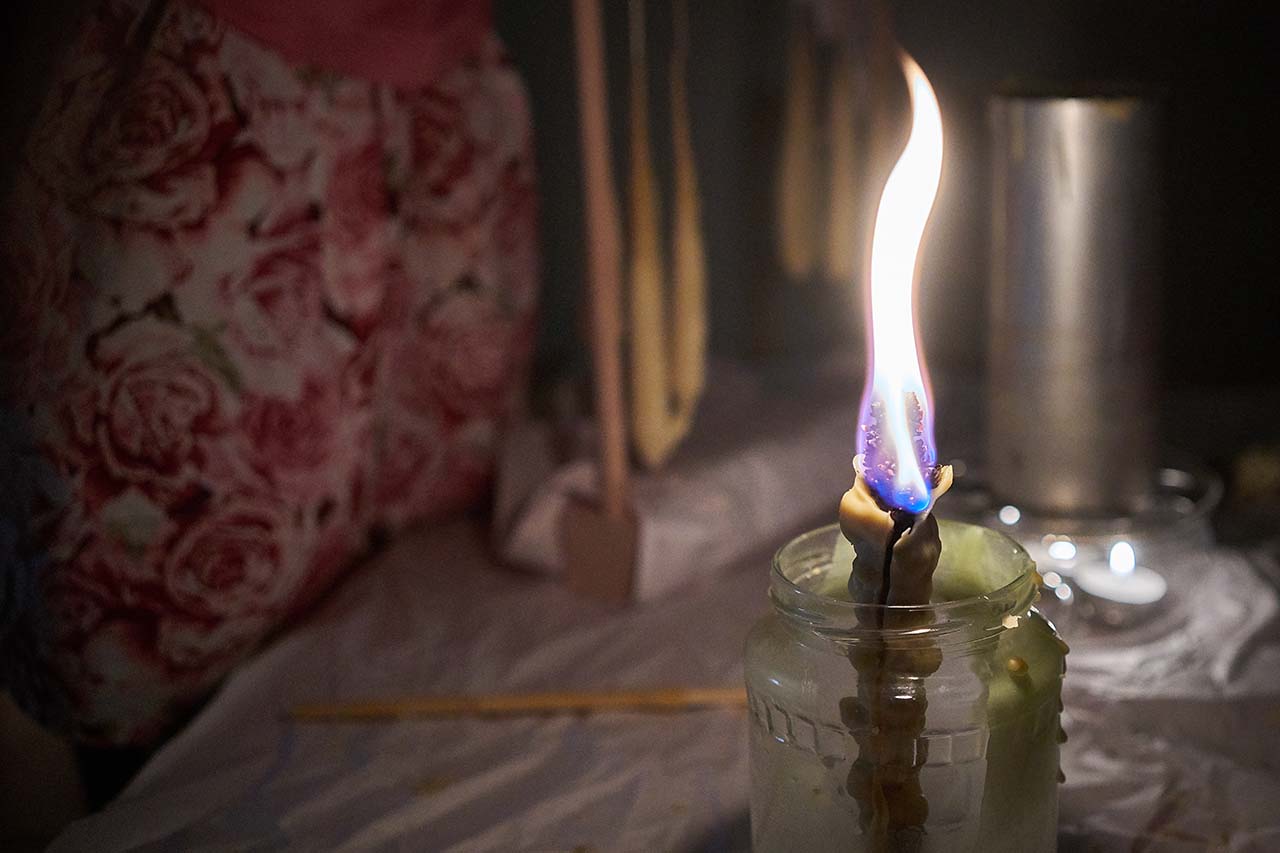
How to Make Herbal Fire Starters
There are many types of fire starters you can make, and the method you choose will depend on their purpose. If you, like me, warm your home with a wood stove or use your fireplace often, the simplest and most practical type of fire starter will work best (method 1). If you’d like to combine a spiritual practice with herbal energy, you can make your fire starters both pretty and meaningful (method 2). For those who want to blend beauty with practicality, there’s a way to do that too (method 3). And if you’re short on time or not feeling particularly creative, but have some herb-infused oil past its date, or a bit of leftover wax and a few mullein seed spikes lying around, there’s a quick and easy method for those too (method 4). (The “candle” in the image above is actually a mullein seed spike encased in wax. It burns hot and fast, making it quite unsafe to use as a candle—but it can serve as a wonderful fire starter in a pinch.)
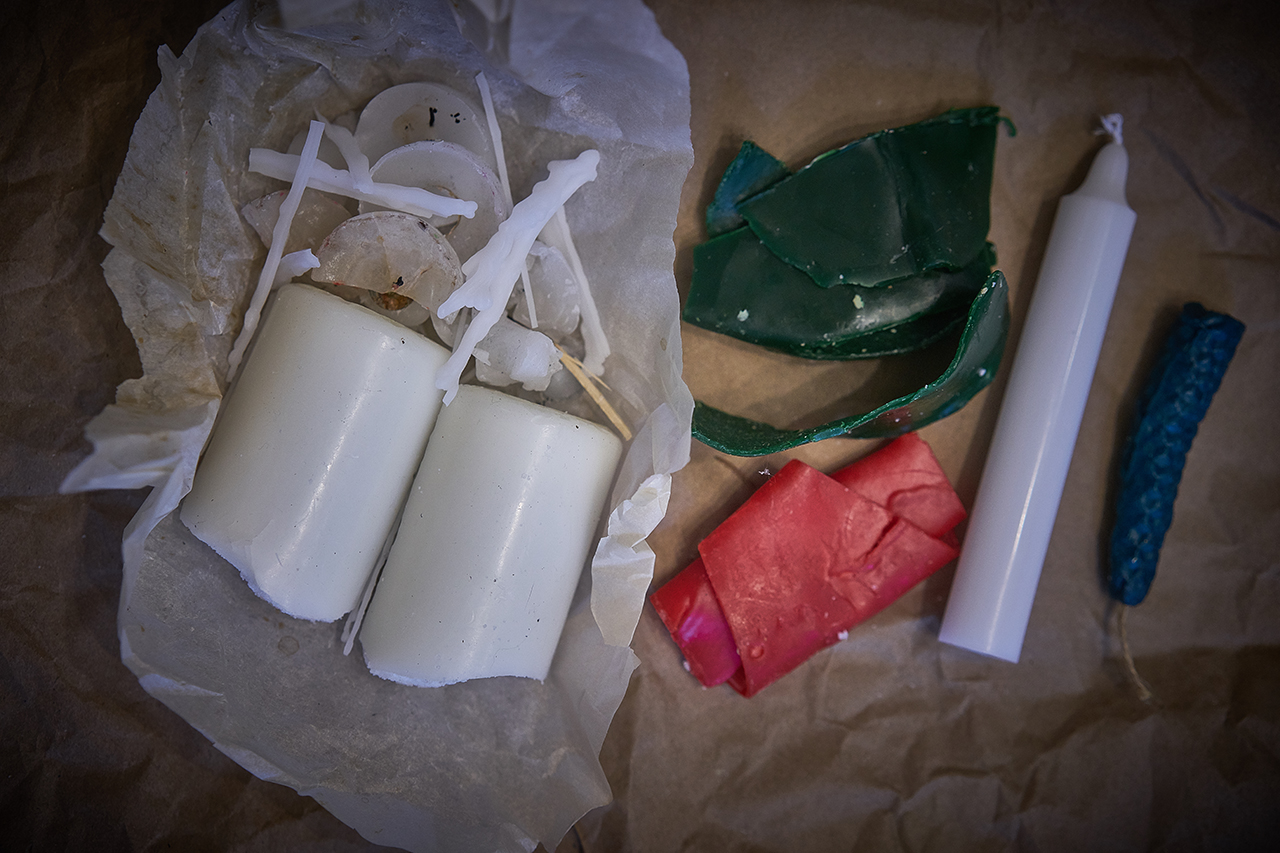
Supplies Needed
- Egg cartons (bottom part with the deeper egg cups)
- Cupcake paper liners
- Twine, cotton or linen string, or pretty ribbon made from natural fibers
- Leftover beeswax, soy, or paraffin candles; or bits of cheese wax
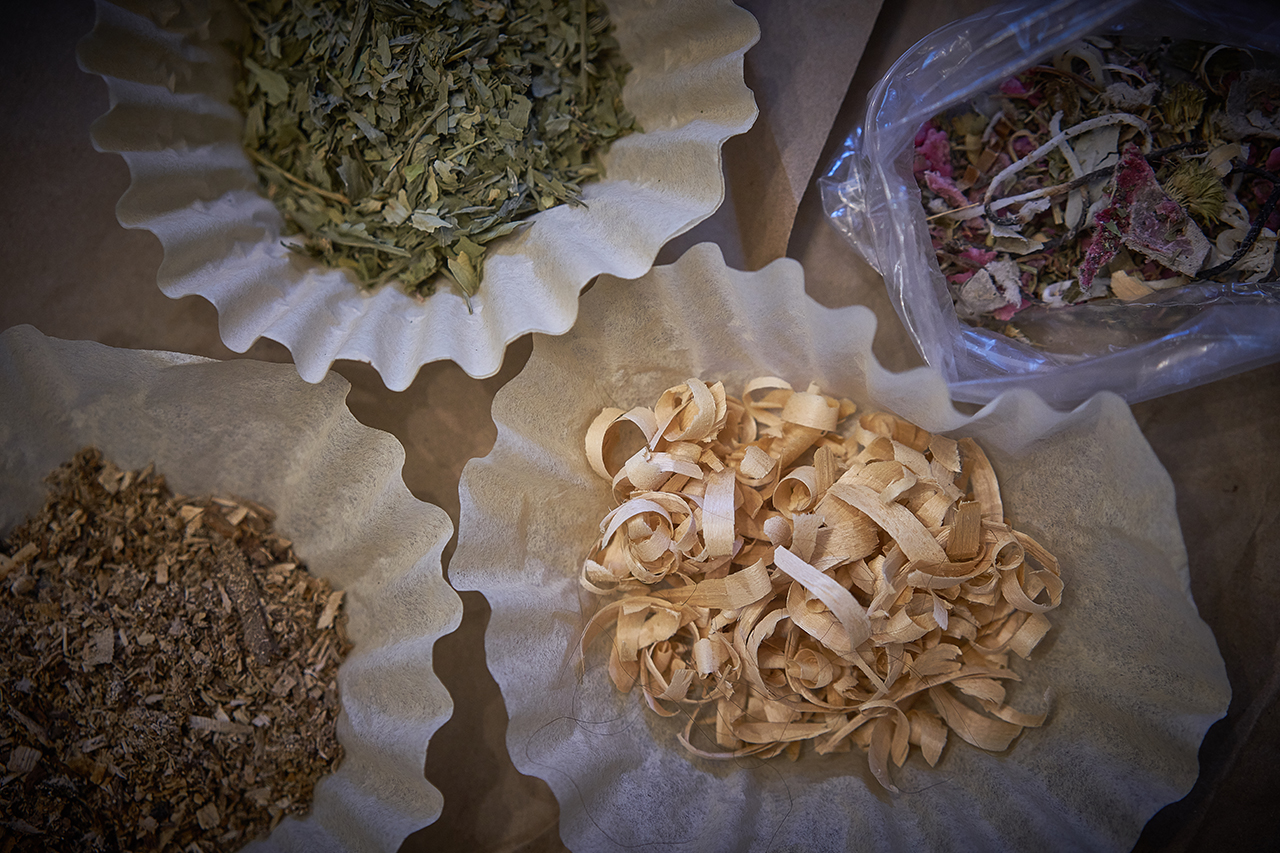
Your choice of:
- Herbs or spices past their expiration date, lower-quality herb materials (stalks, bolted shoots), strained herbs or flowers from oil infusions, corn silk
- Wood shavings (from woodworking, or clean store-bought types sold in pet stores)
- Small scrap wood chips (left over from a cleaned woodpile)
- Sawdust
- Shredded or brown crinkle-cut paper
- Dry garden materials (flower seed pods, ornamental grasses)
- Cinnamon sticks, small pinecones, dried berries, dried citrus, wood bark (especially birch tree bark), or dried Christmas tree branches or needles
- Oily parchment paper or paper towels
Notes:
The ingredients listed above cover all four methods, so it’s up to you which ones you’d like to use. Many of the items mentioned are simply suggestions to help spark ideas—you don’t have to use these specific materials. Feel free to swap them for other suitable options, use all or just a few, or simply work with what you have on hand.
Look around your home and garden, and you might be surprised at what can be reused. Small wood chips swept up after stacking firewood make a great substitute for commercial shavings. If you’re short on wood chips or herbs, used oily parchment from baking or paper towels from fried foods work well too. You can also try leftover cardboard, scrap paper, or dried treasures from the garden, like seed pods, stalks, or leaves. Stick to natural fibers like cotton, linen, or other plant-based materials, and plain non-glossy paper and uncoated cardboard free of plastic tape. And a little tip, skip the dryer lint unless your fabrics are all natural fibers.
Always cover your workspace with a large sheet of brown craft paper or foil before you start. If you don’t, you’ll spend the evening chiseling wax off the table and questioning your life choices.
Tools
- Double boiler
- Wooden disposable spoon (or one you don’t mind keeping permanently wax-stained) or wooden skewers
- Foil, large pieces of brown wrapping paper, or plastic tablecloth
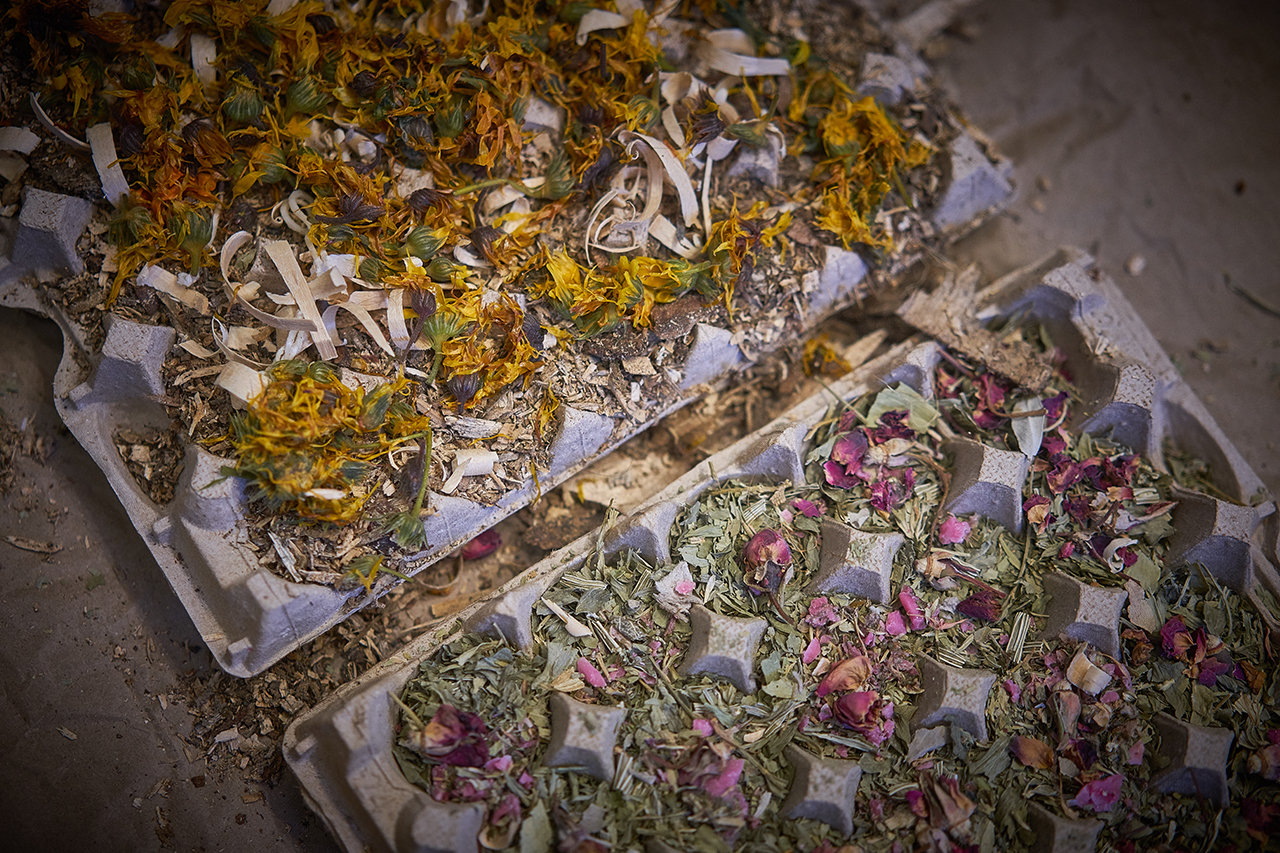
Method 1: Keeping it Simple
- Set up your double boiler with a bit of water on the bottom and start melting your leftover waxes. (From now on, whenever I mention waxes, this includes any binding material you choose to use, including paraffin.)

- Fill up your egg cartons with whatever dry material you’re using. For me it’s usually a mixture of old herbs and scrap wood chips. Sometimes, if I don’t have anything else on hand, I use small crumpled pieces of used oily paper, which I stuff into each egg cup. The point is to use whatever you have, to reuse and recycle as much as possible and to reduce the waste, especially of herbs (which is especially sad for me) that lost their vibrancy, but still deserve respect.
- Pour the melted wax over the dry materials on the bottom of the egg cups. Let the wax settle a little, you’ll see that the amount will be reduced, so when it happens top it up with a bit more wax.
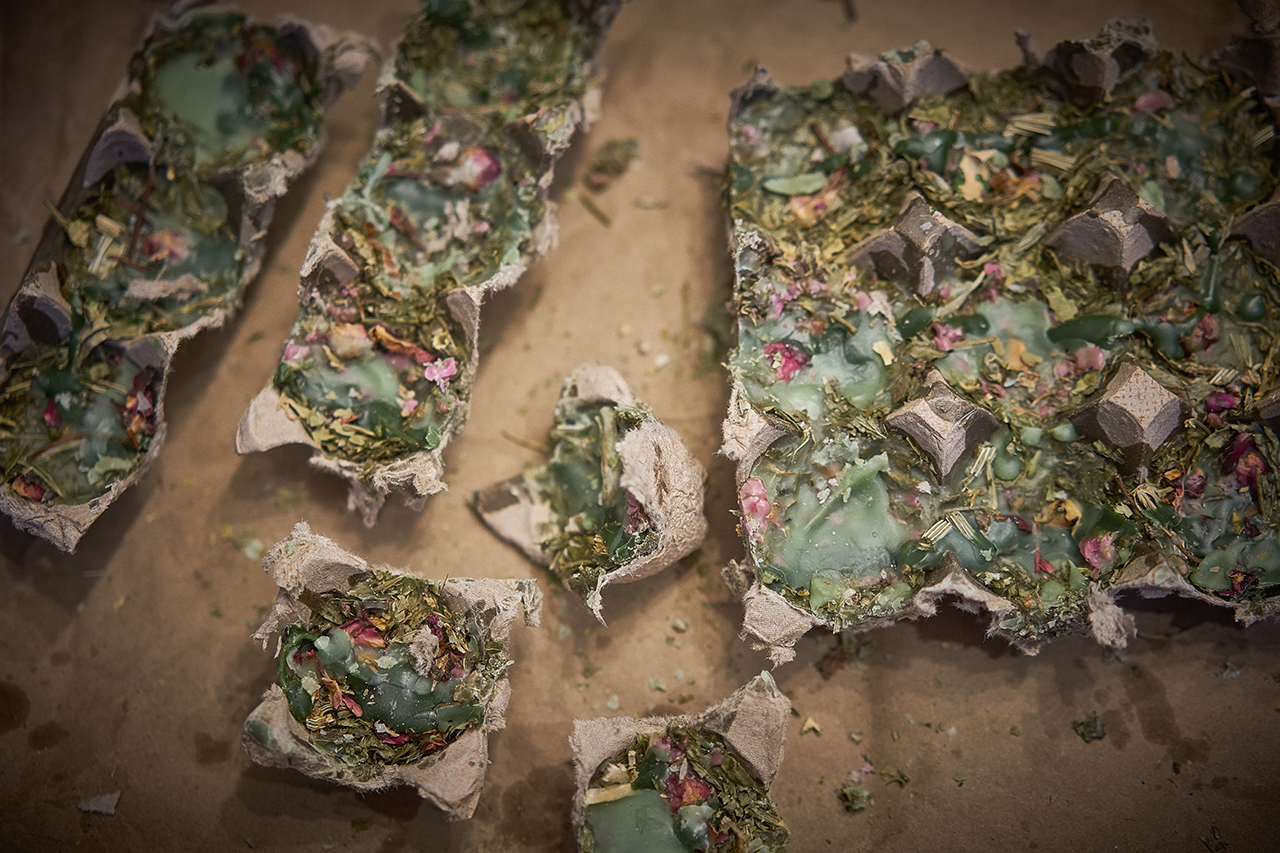
- Let the wax cool down, then tear (or cut) the egg cartons into individual cups.
- To use, put one fire starter under the kindling when just starting fire, it will help the kindling to ignite bigger logs.
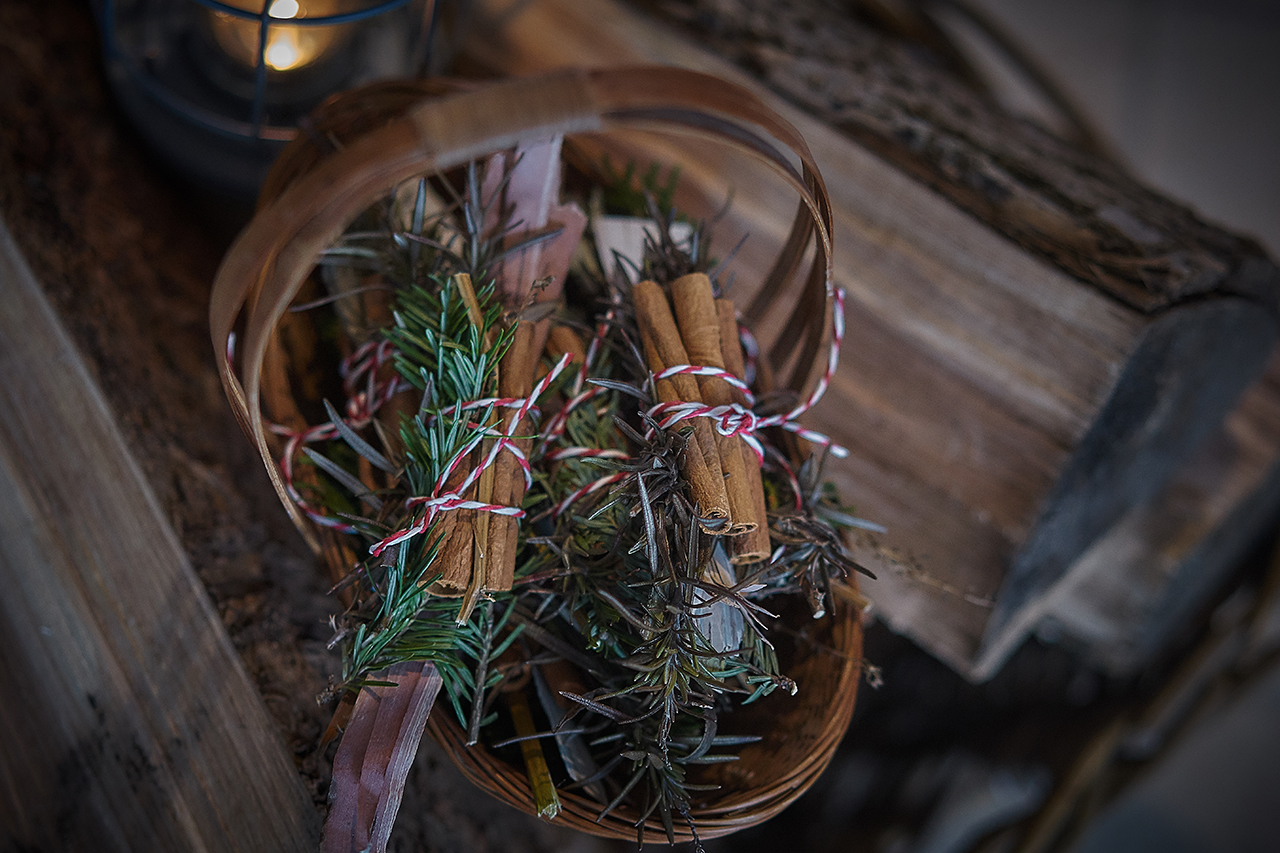
Method 2: A Spiritual Practice
- Take small aromatic sticks, such as cinnamon or palo santo, and thicker dry herb stalks like mugwort, bee balm, sunflower, or mullein. Bundle them together with dry aromatic herbs and tie with natural fiber twine or ribbon.
- Use your fire starters the same way as in Method 1, but take a moment to watch them burn and enjoy the aromas.
Note: The choice of herbs for this method depends on the effect you want from the burning. Are you purifying the space, performing a ritual, relaxing, or promoting healing? Your intention will guide your selection. Some good options include sage, mugwort, thyme, bee balm, rosemary, and pine.
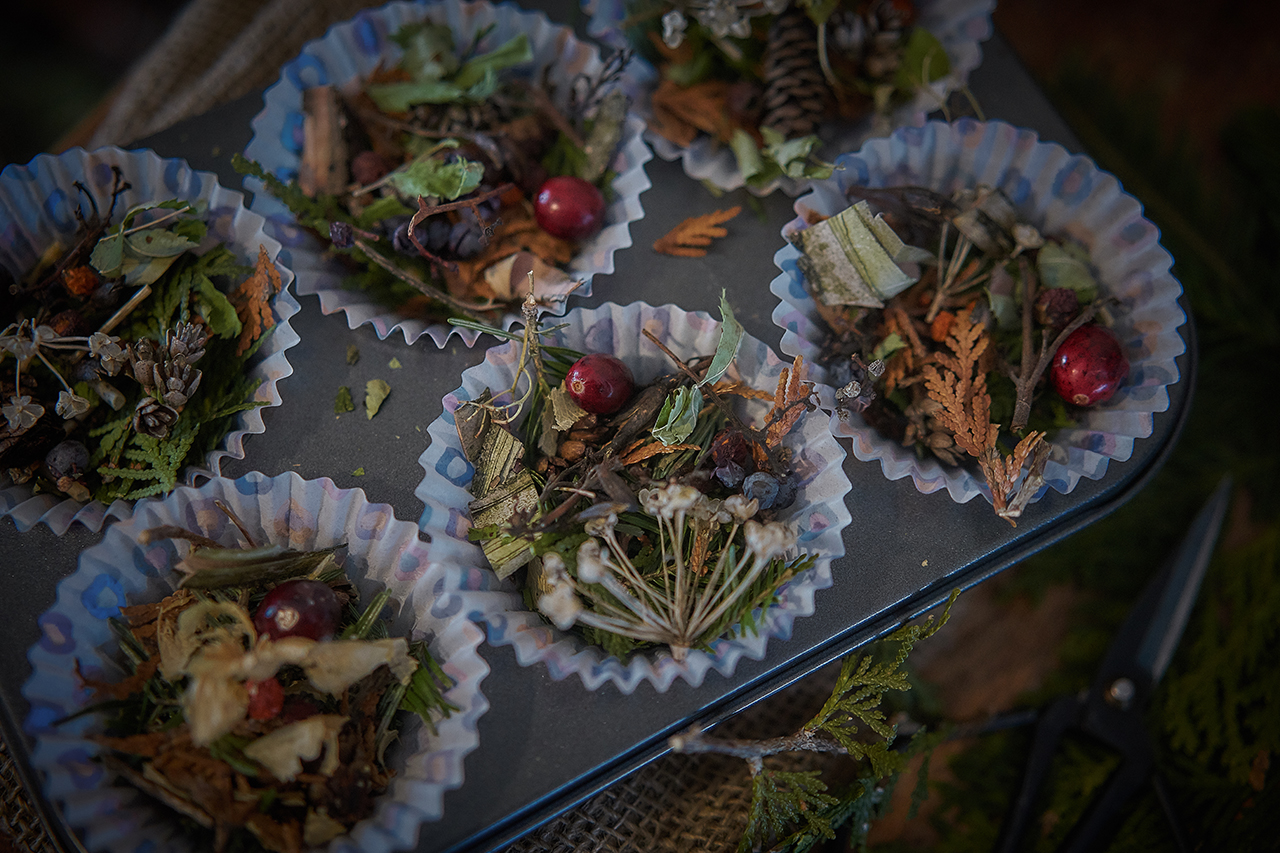
Method 3: A Touch of Beauty
- Pack cupcake paper liners into a muffin pan.
- Add dried plant materials to each cup, arranging them in a visually pleasing way. Try different color combinations and a variety of textures—red berries look lovely next to green spruce needles, and cinnamon, crushed into chips or smaller pieces, pairs beautifully with dried orange rounds. This is a fun and easy activity for kids, from gathering materials outside or from kitchen cupboards to preparing each cup just so.
- Pour melted wax over the dry materials until they are firmly secured. It’s okay if some pieces stick out, as long as they are held in place by the wax—you don’t need to completely cover everything. You want the design to be visible.
- To use, place one fire starter under the kindling when starting a fire. It helps the kindling light the larger logs and adds a lovely scent as the flames rise.

Method 4: Fast & Easy
- Soak egg cartons with old herb-infused oil. They should feel oily to the touch but not be dripping with oil.
- Tear the cartons into individual pieces.
- To use, place a couple of oil-soaked pieces under the kindling in your wood stove.
Note: For this method, you can also use small pinecones, various barks, toilet paper rolls, mullein seed spikes, or any paper you’d like to recycle, as long as it is non-glossy and unprinted. Alternatively, you can dip any of these materials in leftover wax and use them in the same way as the oil-soaked egg cartons.
Want to Create More Herbal Crafts at Home?
If you and your family are ready to dive into the magical world of herbal crafts, you’ll love Herb Fairies. Herb Fairies is our children's book series and herbal learning system that includes an array of simple DIY herbal crafts you can easily make at home. Check out Herb Fairies here.
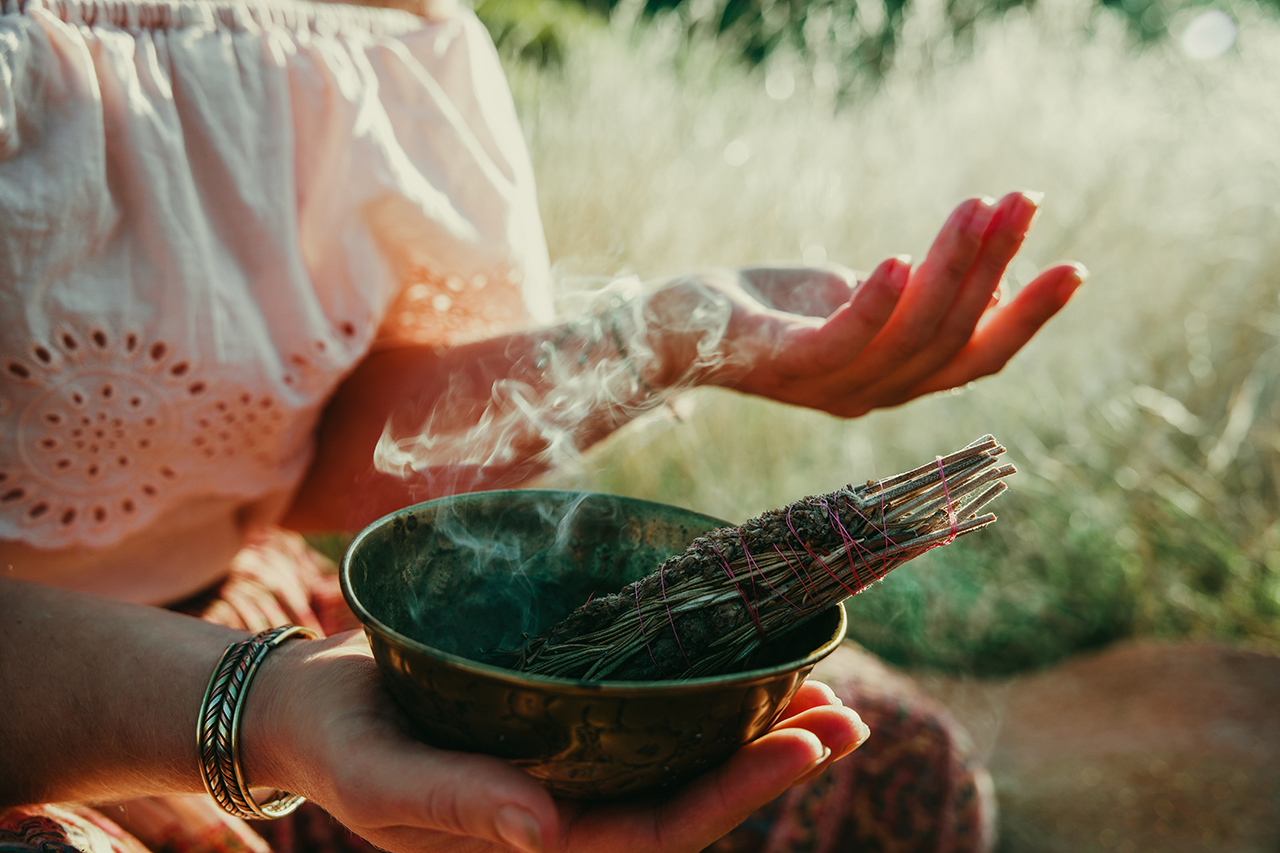
Fire Starters in History and Tradition
Fire starters have been part of human life for thousands of years, though not always in the cozy, herbal form we make today. Ancient people used natural materials like dry tinder, flint, and fire steels to spark flames for warmth, cooking, and rituals. In Celtic traditions, bonfires lit during Samhain marked the end of the harvest and honored the cycle of death and rebirth. These fires were often kindled with gathered wood and symbolic herbs meant to purify or protect. In Germanic lands, the Winter Solstice, or Yule, was celebrated with great fires made from pine or oak, which were symbols of endurance and the returning sun.
Modern herbal fire starters carry echoes of those ancient customs. Blending wax, herbs, and natural materials connects the practical with the meaningful. Fire itself holds a special place this time of year, as it warms, protects, and reminds us of renewal.
During Samhain, when the veil between worlds is said to thin, lighting a handmade herbal fire starter can become a gentle ritual to honor ancestors and mark the changing season. As the wheel of the year turns toward Yule, these same fire starters can welcome back the light and the promise of new beginnings. Those made using Method 2 even resemble small Yule logs decorated with pine, cinnamon, or dried orange peel to symbolize life, strength, and prosperity. However you use them, these simple creations keep alive the ancient connection between flame, season, and spirit.
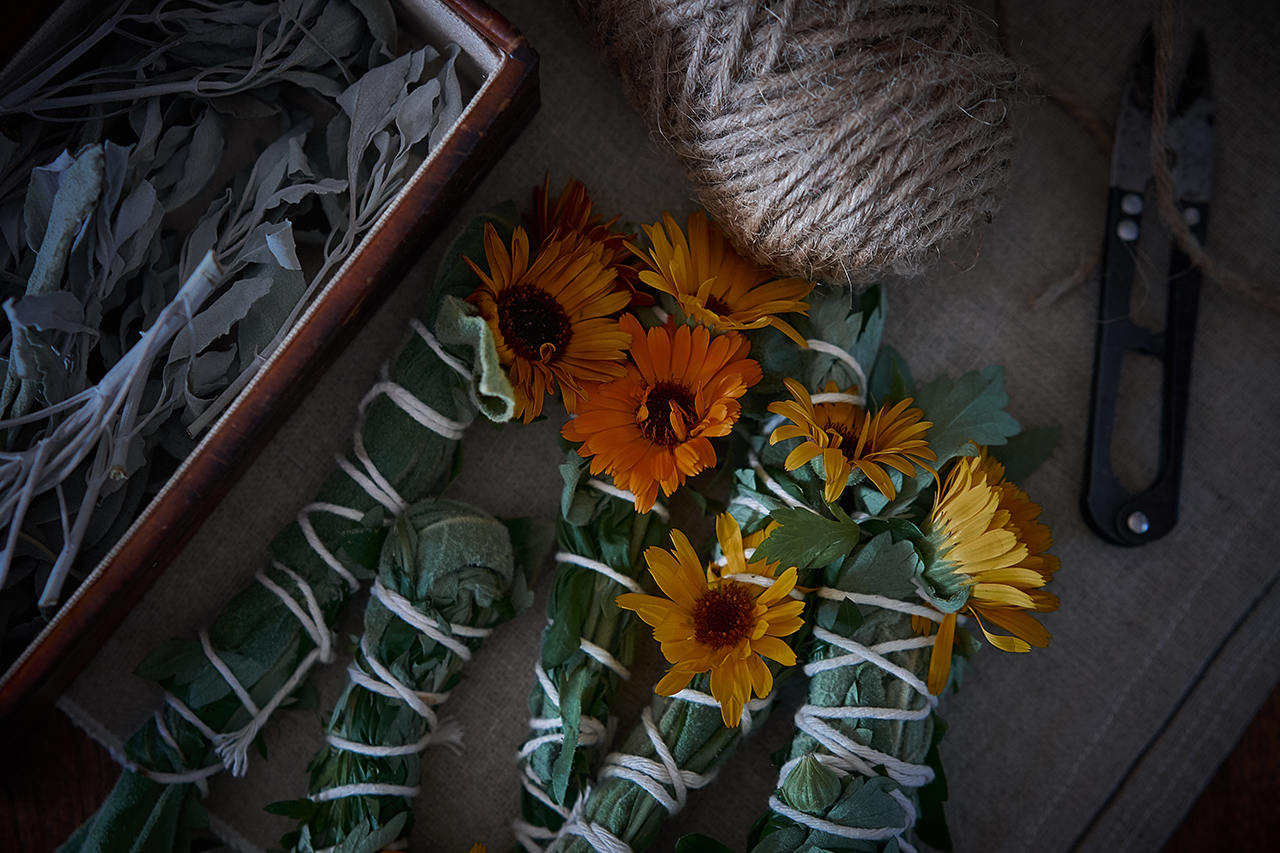
Choosing Herbs for Your Fire Starters
The herbs you choose can add both fragrance and meaning to your fire starters, especially for Method 2, where whole sprigs and stalks are bundled together. Each plant brings its own scent and spirit to the flame. You can mix and match these herbs according to your intention, letting the fire carry their energy into the air.
Some of the qualities of these herbs include…
- Rosemary: bring remembrance and protection with its piney aroma
- Thyme: offers purification and courage with a fresh, earthy scent
- Sage: whether white or garden, is known for cleansing spaces and promoting calm, burning slowly with soothing smoke
- Mullein: mullein stalks catch flame easily and glow softly, symbolizing guidance and light
- Cedar: adds strength and renewal with its warm, woodsy scent
If you’d like to use fresh herbs instead of sticks or bark for your fire starter bundles, keep in mind that some gentler plants are too fragile once dried to tie together easily. In that case, bundle them while they’re still fresh, let them dry thoroughly, and only use them after they’re completely dry.
Here are frequently asked questions about fire starters…
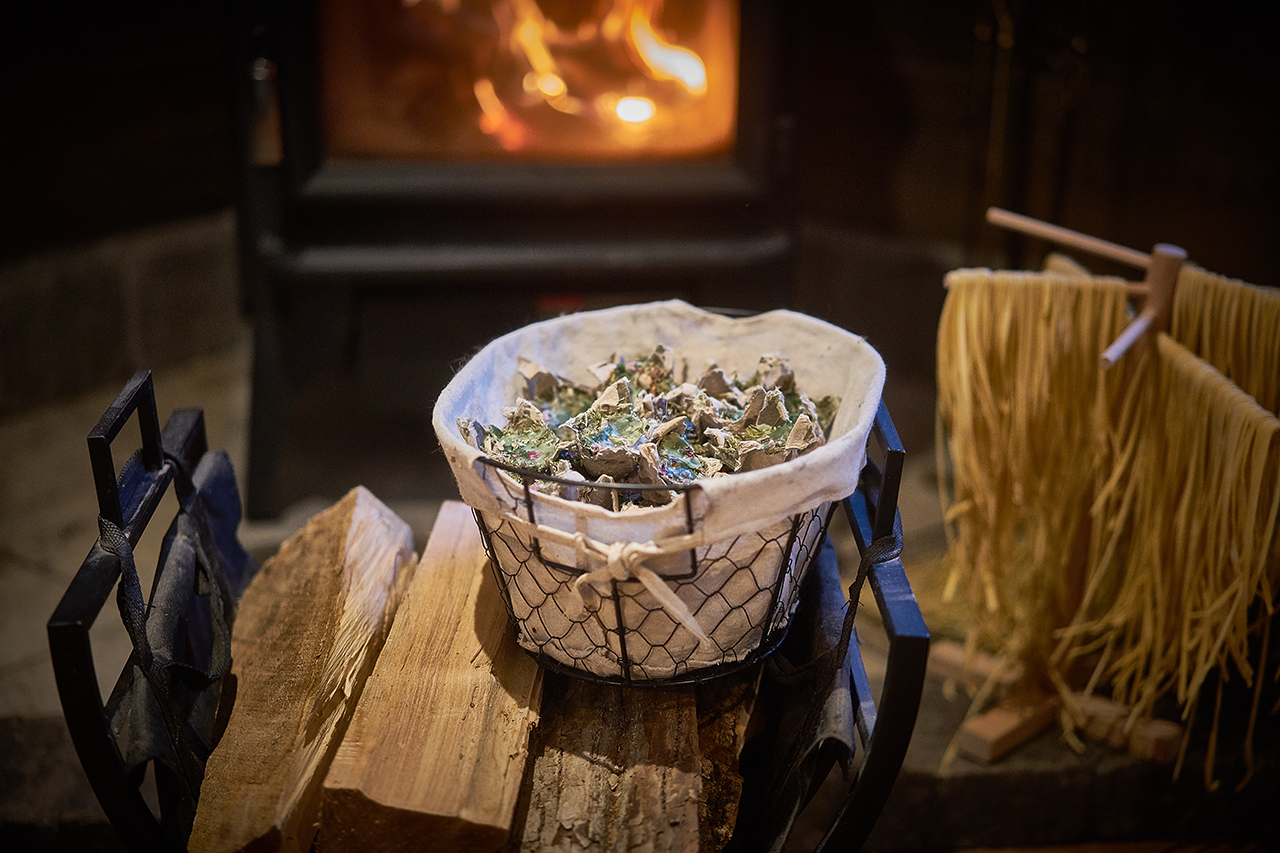
Are herbal starters safe to use indoors or outdoors?
Herbal fire starters can be used indoors or outdoors, but safety is important. Ensure proper ventilation indoors, as some herbs can produce strong or irritating smoke. Children and pets can be sensitive to some scents, so choose herbs carefully. Avoid materials that produce excessive sparks or toxic fumes, and do not include lint, plastic, or other flammable items. Outdoors, use them away from dry leaves, branches, or anything else that could catch fire.
What’s the environmental impact of making or using herbal fire starters?
Making herbal fire starters is a wonderful way to recycle materials that might otherwise go to waste. Used paper and cardboard, old spices, herbs sitting unused in your cupboard, or even herb-infused oils past their expiry date can all be given a second life. By turning these natural ingredients into fire starters, you create something both useful and beautiful, adding fragrance and color to your project. As long as you stick to clean, natural materials like uncoated paper, herbs, and wax, they are an eco-friendly alternative to commercial starters and they smell and look much nicer too.

How long do they last, and how should they be stored?
We keep our fire starters in a linen-lined basket beside the wood stove because it’s handy and looks lovely, too. If you’re using Method 4, choose a plastic box or another type of container that won’t be stained by oil. Thanks to their wax and oil content, fire starters can be stored almost indefinitely. Just make sure they stay dry and protected from moisture. It’s also wise to keep an eye out for mice or other curious critters who might find them interesting. Beyond that, storing them is easy and fuss-free!
